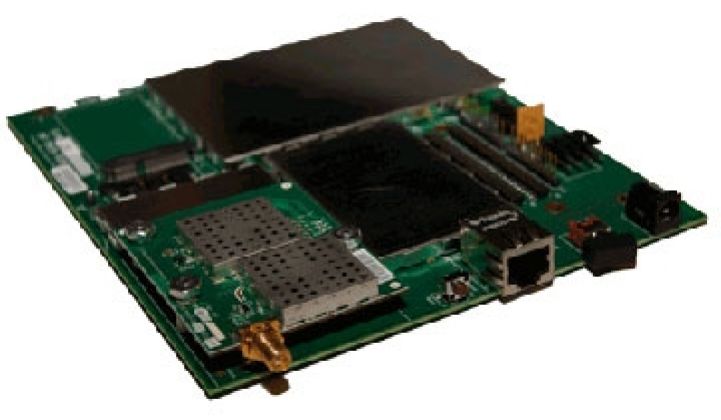On-Ramp Wireless says it has solved a number of the problems with smart grid communications and better yet, they have done it in such a way that may allow them to avoid becoming road kill in an increasingly competitive marketplace.
The San Diego-based company has devised a networking platform called Ultra-Link Processing (ULP) that reads like a utility's network manager's wish list -- in theory, anyway. ULP signals have a five-mile range, do not get obstructed by steel or concrete (the company put one under a manhole cover and could still maintain signal connections for two miles), and can carry enough data to provide remote monitoring or demand response services, according to CEO Joaquin Silva.
The equipment will also be relatively inexpensive and require minimal infrastructure, he added. A single base station, about the size of a WiFi router, will be able to handle data from 10,000 meters. The technology can also be used to monitor and control HVAC systems in buildings, as well as to link emergency response units together.
"It does well in buildings and it does well with a lot of interference," he said. "We've figured out a way to take it [the chip inside its networking cards] to an extreme amount of signal processing."
San Diego Gas & Electric will test the technology out in an upcoming trial, and three other trials will be announced soon.
The big knock against On-Ramp? It's a proprietary technology from an unfamiliar, untested start-up. But here is how the company hopes to get around that: like the cellular giant Qualcomm, On-Ramp will likely license its technology. The company makes its own equipment now, but in the future it will instead provide intellectual property, chipsets and/or technical advice to larger, established manufacturers.
In a way, you could say the company is a combination of a newfangled technology and an old-fashioned business plan. Instead of adopting an open standard and trying to compete on price, performance, implementation and features like many other smart grid vendors, On-Ramp effectively will try to turn its technology into a de facto industry standard.
If the technology works and the licensing terms aren't punishing, licensing can be a lucrative path to success. Qualcomm became a giant in communications using that route. ARM chips can be found in over 90 percent of the world's cell phones, yet England's ARM does not make chips: it licenses chip designs and intellectual property to Freescale and others. (Side note: the processor on On-Ramp's networking card is an ARM 7 and the processor in the base stations is a Power PC. For chip fans, that's another walk down memory lane.)
Another old-fashioned note about the business plan: If you didn't know On-Ramp were a start-up, you'd swear it was a division of Texas Instruments. TI remains the largest manufacturer of digital signal processors, chips inside cell phones that help extend signal range. It also sells ULPs, or ultra-low-power radio chips, and DLPs, or digital light processors.
While On-Ramp will not disclose its signal processing, Silva will describe the choices the company made when designing its products. The protocol is effectively designed for spoke-to-hub communications. Radios inside an electrical meter at a home are effectively designed to communicate with a central point, like a router.
By contrast, mesh networks are designed for web-like networks. In a mesh network, any radio or end-point can communicate with any other. However, this also means adding layers to the communications protocols that can soak up power or bandwidth. (Mesh networking companies disagree.)
Spoke networks can also be designed for long range. On-Ramp's radios do not carry massive amounts of data. Homes and smart appliances, however, won't send massive amounts of data to utilities. A basic smart meter might send 5 kilobytes a day. If utilities want to get more data in a region, they can add more base stations, he contends.
So what are the problems? First, Qualcomm and TI, among other established chip vendors, will likely develop similar products. Last year, in fact, Qualcomm unfurled an initiative to develop products for the "Internet of things." How much attention the conglomerates pay to smart grid will depend on pricing and market conditions. Chips in the cellular market will likely command higher prices than those sold to smart grid vendors. If the cellular market grows while smart meter deployments get mired in trials, these large companies may not put much emphasis on smart grid. On the other hand, large chip companies need to maintain volumes so any potential opportunity can be attractive.
Second, existing cellular networks can already do many of the things that On-Ramp only promises. Silva argues that in the long run, cellular will be more expensive. Utilities will want their own networks and won't want to run their smart grid signals on the networks already owned by AT&T and Verizon.
"The licensing fees and infrastructure will be too high," he said.
SmartSynch, which makes smart grid equipment that trade signals on cellular networks, strongly disagrees and has several contracts with major utilities to back up its argument. The Tennessee Valley Authority recently signed up to deploy SmartSynch's technology to track renewable power assets.
Ultimately, it will be the data from these trials that could determine the winners.



